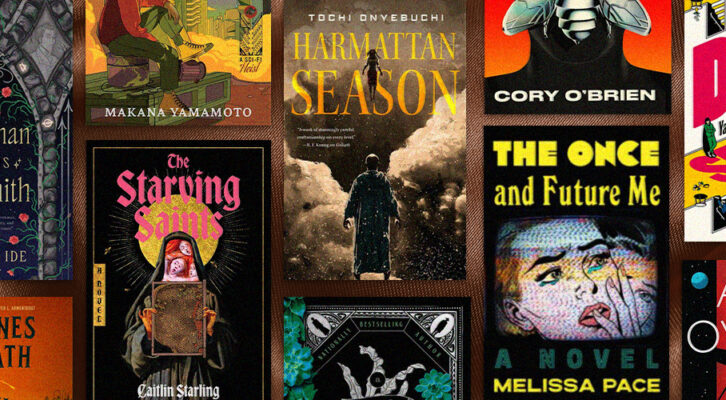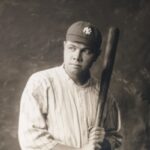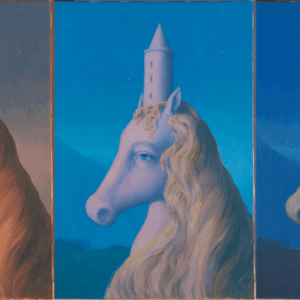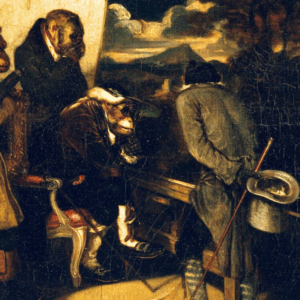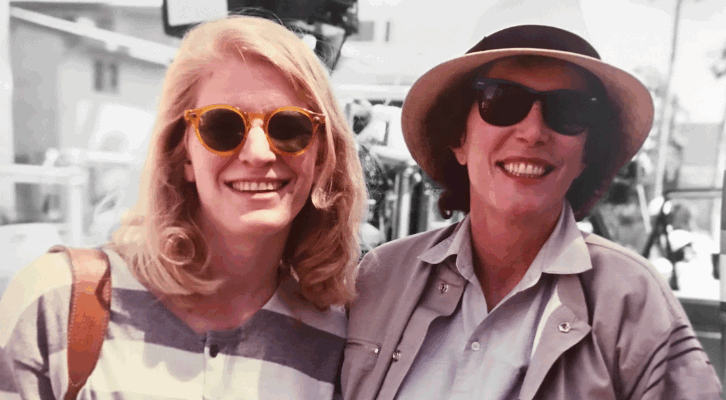
Understanding My Mother Through the Movies She Made
Marisa Silver on Recognizing Her Mother Frame By Frame
When my mother made her first feature film, Hester Street, I was thirteen. The film was a family DIY affair. My mother wrote and directed it; my father produced and distributed it. My two sisters and I were present at any number of dinner table conversations about the challenges of making an independent film on a tiny budget, one that required a wholesale recreation of a Lower East Side neighborhood at the turn of the last century. We learned what limited partnership financing was, we heard about the perils of trying to make a non-union film.
At one point, my father was taken for “a ride” by a representative for the Teamsters, after which Teamsters drove the film trucks. A gun on the floor of the sedan might have been involved. We heard the stories about how they could only afford one horse for the street scenes. My parents figured out that if they painted one side of a chestnut mare white, they could create the illusion of two animals depending on which direction the horse moved across the screen. My mother never used the words “art” or “artist” to describe her work or herself, and I grew up with the sense that she was a craftsperson solving a set of complicated problems.
It would be years before I understood how her work would reveal her to me in ways that my experience of her did not.
On opening night, the five of us walked over to the Plaza Theater where the film was showing. I can still remember what it felt like when we arrived to see a line outside the movie theater that wrapped around the corner and extended down the block. I was swept up in my parents’ pride and delight; they had, against all odds, pulled it off. Our family ducked into the movie theater and stood at the back for a few minutes to watch the beginning of the film. I’d already seen it. I thought it was a good story. I liked Carol Kane’s young wife who finally had the bravery to choose her life. The busybody neighbor was hilarious. The soft good looks of the sweet and kind Talmudic scholar that Kane’s character falls for appealed to my adolescent heart.
I was not sophisticated in the ways of art making and had no idea that what was on screen was the sum of choices my mother had made, and that these choices had to do with something more elusive, and much more personal than whether one horse could stand in for two. It would be years before I understood how her work would reveal her to me in ways that my experience of her did not.
She was born in Nebraska, a child of the Depression. She possessed, to some extent, the stereotypical attributes of those two identifiers: an emotional and practical thrift. She greeted most problems with a Midwestern no-nonsense, knuckle down and get on with it grit. Even when she and my father had created a comfortable life for us, she’d put gaffer’s tape on a ruinously split handle of a breadknife to give it another decade.
A family joke had it that my mother never told stories of her past but reveled in the stories of my father’s childhood. It was as if she had co-opted his memories, happy to jettison, or at least, not contemplate, her own.
Here’s what I knew: Her mother and father were born in Russia and brought to America as children. They met, married and established a home in Omaha. Her mother was a homemaker; her father helped run a family-owned lumberyard. My mother was a bright little girl. At school, she was routinely sent out of the classroom to read in the hallway because she was more advanced than the other students. Once, on a dare, she walked over a ravine on a narrow plank—a particularly startling detail, as we knew her to be a physically fearful adult.
I knew this, too: Her beloved father died when she was seventeen. He was her source of intellectual inspiration, and during the many years he was ill, she would sit by his bedside, and they would discuss books. After he died, her mother sent her to see a psychiatrist to discuss the loss—a surprisingly forward-thinking idea for the time. When the doctor asked my mother how she was doing, she told him that she was fine. That was the end of that. She never went to a therapist again in her lifetime. That is the sum of what I know: a smart girl reading books in a hallway, a moment of uncharacteristic daring, and a great loss.
She made me feel that my ideas mattered. She took me seriously.
As a mother, she was intellectually alive. Recognizing my early interest in movies, she made me her film buddy, and together, we spent many hours sitting in the darkened Thalia, The Regency, The Quad, watching films like The Bicycle Thief, Grand Illusion, The Apu Trilogy, Two or Three Things I Know About Her. This was the seventies, and we’d sit in the smoking section where she’d light one Kool after another, never taking her eyes from the screen. She would occasionally reach into her purse mid-way through a film, take out her lipstick, and re-do her lips in the signature orange shade from which she never varied. I found this embarrassing but also comforting. She was herself no matter where she was, even in the dark, absorbed in the films she loved.
My mother included me in her work life. At ages fourteen or fifteen, I didn’t think it was strange to be asked to read and give my opinion about a script she was working on. In those pre-computer days, she had me type up revised pages, sometimes based on feedback I’d given. Once a script was finalized, it was often my job to take the train to pick up boxes of copied and bound scripts. Watching a rough-cut of one of her films was not simply a treat, but a requirement. And so was the long discussion afterwards when my mother grilled me for my opinions. She made me feel that my ideas mattered. She took me seriously.
I took her seriously, too. I knew what it had taken for her to make films. She’d once gone up for a studio job and been told by the producer that he couldn’t see any reason to hire her when there were so many men who wanted the job. Not ones to take no for an answer, she and my father decided that they would figure out how to make films on their own.
When I was not in school, I’d watch my mother direct. She was decisive, and it was amazing for me to see her run the set. She knew what she wanted, and she was confident about her ability to do it. Once, after a market research screening of a later film she made for a studio, the executives in charge of the production gathered round, debating the audience response, pitching changes to the cut that would make the audience “want to see” numbers rise. My mother listened for a few minutes and then simply walked away. She had negotiated a contract that gave her final cut and she knew exactly the film she wanted to make. She had no interest in making nice or putting people with perceived power at ease, most especially men.
Growing up in my house was serious business, too. I knew there was no room for a bad grade, a messy room, or a missed curfew. But I also knew that, as far as my mother was concerned, there was not much room for other kinds of weakness that had to do with my sorrows or my fears or the pains of childhood. I grew up knowing that when she asked me how I was, the correct answer was always and only “fine.” As she demonstrated in her one and only visit to a psychiatrist after her father’s death, my mother had no interest in dwelling in the murky region of my troubles. Once, when I called tearfully to tell her that I’d broken up with a boyfriend, she listened for a bit and then said, in the kindest way possible “Don’t worry, you’ll meet someone new.” Well, sure. But couldn’t we cry a bit together? Couldn’t she take care of my banged-up heart?
Her own heart weakened with age. In 2015, a theater in Los Angeles was screening Chilly Scenes of Winter, and the programmers invited her out from New York to participate in a Q&A. She was, by then, eighty years old. The bulk of her career took place in the ‘70s and ‘80s and although there were many opportunities for retrospectives and interviews, she was not that much interested in burnishing her legacy. But maybe, too, she was uncomfortable with nostalgia and its attendant emotions.
A year earlier, my father had died very suddenly. Any look into her past would necessarily involve talking about him, and hers was a very private grief, a privacy that extended even to me; I never saw her cry and when I tried to draw her out to talk about her feelings (and maybe my own) she shut me down. She would have been loath to become vulnerable in front of strangers at a movie theater. But her daughters and grandchildren all lived in LA, and she was trying to get on with her life without my father, and so she came.
I was surprised by how much of the film I recalled. I was more surprised, though, by the way in which I was taking it in.
The night before the screening, she’d slept at my house. In the morning, she came out of her bedroom looking pale and worried. She was scared. Her heart, she said, was fluttering. I am my mother’s daughter, and so I immediately discounted her worry. She was tired from travel. She was nervous about appearing in public. She was fine. But then, sense got the better of me and we went to see the doctor. He ran an EKG and sent us immediately to the ER. She was admitted for the first in a series of cardiac events that would, years later, contribute to her death. But now, the fix was relatively simple. Some pills. Some rest. She’d stay in the hospital that night, and so, in an echo of all those times she asked me to watch a cut of a film or type up a scene, she asked me to go to the screening that night and speak on her behalf.
I hadn’t seen the film since it was first released in 1979. I’d been nineteen then, busy at college and with my life. My mother’s work was no longer a significant part of my life. I had no memory of when or where I first saw the film, although, as I watched it that night in Los Angeles, sitting in a revival house so reminiscent of all those she and I had sat in decades earlier, I was surprised by how much of the film I recalled. I was more surprised, though, by the way in which I was taking it in.
For the first time, I watched a film of hers recognizing that every camera angle, every edit, and every nuance of a performance were not technical problems she’d solved but choices she had made. And I knew that, encoded in these choices, was a portrait of her, a different portrait than the one I drew from my experience of her as my mother. What she felt about the relationship between men and women, what she found funny, what she found melancholy and even heartbreaking—all of this was there on the screen.
In one scene, Charles (John Heard), having been left, months earlier, by Laura, the love of his life (Marybeth Hurt), stalks the home she’s returned to where she lives with her husband and child. Of course, he’s noticed, and the husband (Mark Metcalf) comes out of the house to confront him. The husband is a self-confident, incredibly handsome guy who knows that he needs only the power of his genial presence to put his extremely unthreatening rival in his place. It’s a cringe-worthy moment for Charles—his desperation is on full and humiliating display. But you come away from this scene laughing and somehow filled with affection for him.
In scene after scene, my mother’s work showed her nuanced perceptions about human behavior and her generous, big hearted embrace of folly and foible, and, yes, sadness, too. Here was her particular sense of humor and her winsome and forgiving appreciation of the emotional pratfalls people make in an effort to get what they need in order to connect, to love. Her filmic style bore no resemblance to the forward marching, single-minded mother I knew. Scene after scene played out in a whimsical, unforced manner that owed less to formal and exacting compositions than to her desire to capture the gentle unruliness of any given moment. She seemed to suggest, through her light touch, that the texture of life had everything to do with the messes people created as they made stabs at happiness.
The mother who came across in the film did not erase that exacting mother I knew. But I felt I was being given a more nuanced view of a fully expressed woman who experienced what she did, saw what she saw, and then used her art—and she was an artist—to say things she might not have been able to say in any other way. Frame after frame gave me a woman who was amplified and complexified. And the thrill of it all was that even as I felt that I was seeing aspects of her that, for whatever reasons, she’d kept hidden from me, I recognized her.
__________________________________
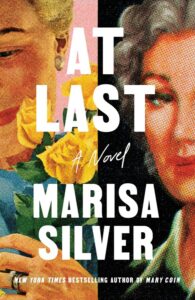
At Last by Marisa Silver is available from Simon and Schuster.
Marisa Silver
Marisa Silver is the author of the novels At Last; The Mysteries; Little Nothing; Mary Coin, a New York Times bestseller and winner of the Southern California Independent Bookseller’s Award; The God of War, a finalist for the Los Angeles Times Book Prize for Fiction; and No Direction Home. Her first collection of short stories, Babe in Paradise was named a New York Times Notable Book of the Year and was a Los Angeles Times Best Book of the Year. When her second collection, Alone with You was published, The New York Times called her “one of California’s most celebrated contemporary writers.” Her fiction has been included in The Best American Short Stories, the O. Henry Prize Stories, as well as other anthologies. She is a recipient of fellowships from the Guggenheim Foundation and the Cullman Center for Scholars and writers. She lives in Los Angeles. At Last is her most recent novel. For more, visit MarisaSilver.com.











